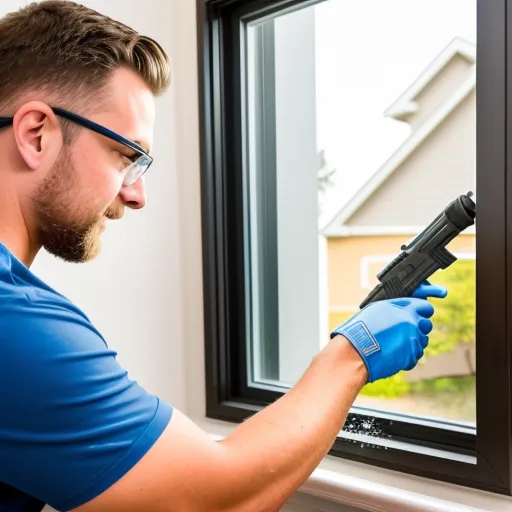Blog
Window Caulking: The Do’s And Don’ts

Window caulking to give your windows a complete appearance and to keep leakage and breezes out is a pretty typical DIY project. However, if improperly handled, it might appear as a rough, unprofessional job done. Caulk is not a decorative feature; it should match the glass and be hardly visible. The process is a skillful operation that applies a long, narrow strip throughout the whole length of the seam. Continue reading to discover the dos and don’ts of caulking windows like a master.
- Do Use the Right Caulk
Siliconized latex is similar to acrylic latex, except it includes silicones called silanes. The silicone aids the caulk’s adhesion. Siliconized latex shares the same fundamental features as acrylic latex, such as being paintable and water-based, but it is more robust and can resist more extreme circumstances. If you want the convenience of latex but need something more durable to seal windows externally, siliconized latex would make a fantastic option.
- Do Buy a Caulking Gun
To relieve pressure on the caulk in the tube, low-priced caulking guns have a ratchet-style handle that must be wrenched loose. Caulk will continue to ooze out of this sort of gun until you release the handle, often leading to extra unwanted caulk on the glass. A caulking gun with a thumb release that you can squeeze to relieve the pressure so it stops flowing after you’re done applying a smooth stream is a preferable option.
- Do Use Painter’s Tape Along Edges
You may still get decent results by taping the working area with painter’s tape if your hands are unsteady or you can’t seem to maneuver the caulking gun well enough to produce a consistent stream. Simply run pieces of painter’s tape down the seam’s borders, somewhat away from the seam itself. Then, apply a film of caulk and smooth it out. After flattening the strand, carefully peel off the painter’s tape to reveal a flawless caulk line.
- Don’t Overapply
It may be enticing to use more sealant to fill up considerable cracks, but this might cause issues down the road. Stuffing the area with flexible support foam before caulking is the recommended step of the process for cracks larger than a centimeter. Or you may need a more large-scale repair if gaps are too big to self-fix.
- Don’t Skip Tooling
After the caulk has been applied, tooling is the act of leveling it. This crucial stage guarantees that your work is tidy and looks decent on the eye. Frequently, the greatest tool to utilize for this procedure is your fingers. After you’ve applied a bead of caulk, run a gloved finger down it to make sure it completely fills the gap. To avoid your skin picking up the caulk, dunk your finger in alcohol or soapy water before tooling it.
Caulking the window frame is the complete answer to many of your interior concerns; either your closed window is allowing in air drafts, the rise in your home’s energy usage is reflected in your electricity bills, or insects are infiltrating your apartment via the holes in the window. But before you begin, keep the abovementioned do’s and don’ts in mind.




